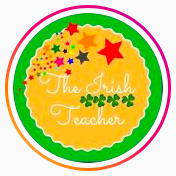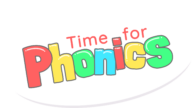Curriculum Links

How Time for Phonics links with the Early Learning Goals and the National Curriculum
The Time for Phonics programme is designed to support many other aspects across the KS1 curriculum and aligns with many of the Literacy based Early Learning Goals (ELGs) and the new Statutory Framework for the Early Years Foundation Stage (EYFS) 2021. The information below maps out exactly how each of the EYFS or curriculum areas maps to the Time for Phonics programme.
Early Learning Goals (ELG)
- Say a sound for each letter of the alphabet and at least 10 digraphs
During phase 2 children are taught most of the letters of the alphabet and the first 4 digraphs. The rest of the alphabet and further digraphs are taught during phase 3. According to our programme progression, phase 3 will be completed by Spring 2 of Reception and consolidated in Summer 1. Appropriate assessment materials are provided so that teachers can thoroughly assess children’s grapheme recognition after each phase and at the end of the year. - Read words consistent with their phonic knowledge by sound-blending.
Children will be taught blending and segmenting skills to read words within the first three weeks of phase 2, using the sound button technique. This continues throughout the programme with children reading and writing words that contain the taught GPCs and given further decodable texts to ensure exposure to a wide range of decodable words at the appropriate level. - Read aloud simple sentences and books that are consistent with their phonic knowledge, including some common exception words.
Our range of decodable texts provide children with the opportunity to read aloud simple words and sentences that are appropriate for the level they are working and their developing phonic knowledge. Assessment documents are provided so that children’s phonic knowledge of GPCs, decodable and tricky words can be matched to the appropriate decodable book. Additionally, the Time for Phonics phonics planning and accompanying resources contain a wide variety of opportunities to read words, captions, sentences and paragraphs.
KS1 National Curriculum Statements
- Apply phonic knowledge and skills as the route to decode words.
Children will be taught blending and segmenting skills to read words within the first three weeks of phase 2 using the sound button technique. This continues throughout the programme with children reading and writing words that contain the taught GPCs as well as being provided with decodable to ensure exposure to a wide range of decodable words at the appropriate level. - Respond speedily with the correct sound to graphemes (letters or groups of letters) for all 40+ phonemes, including, where applicable, alternative sounds for graphemes.
Each lesson contains a revisit and review section where children are provided with the opportunity to recap previously taught graphemes. The Time for Phonics assessment materials provide teachers with the ability to monitor and track progress, identify gaps in knowledge and match decodable books. A detailed, clear and planned phonics intervention programme is also provided as part of the scheme in order to plug gaps in phonics knowledge and skills. - Read accurately by blending sounds in unfamiliar words containing GPCs that have been taught.
The phonics planning, phonics resources and word lists ensure access to a wide range of decodable words. Within every lesson there is at least one opportunity to practice these skills. This is further supported by the accompanying decodable ebooks, mini-books and comprehension activities. - Read common exception words, noting unusual correspondences between spelling and sound and where these occur in the word. A small number of common exception (tricky) words are introduced throughout the scheme within the planning. The accompanying flash cards highlight the ‘tricky’ part of the common exception word to children. The common exception words are then reflected within the appropriate decodable ebooks so that children are provided with the opportunity to further practise reading them and develop their fluency.
- Read words containing taught GPCs and –s, –es, –ing, –ed, –er and –est endings. Words with these endings are included throughout the scheme, in particular those that are easily decodable (s, ing, er) and words using these endings are used within the decodable texts. The final week of phase 4 has a full week’s of explicit planning on revisiting previously taught word endings and introducing the further suffixes that have not been covered to date.
- Read other words of more than one syllable that contain taught GPCs.
Our word lists, flash cards and other accompanying resources contain a wide variety of words that become decodable with each new GPC taught. These include everything from CVC words, compound words and polysyllabic words. - Read books aloud, accurately, that are consistent with their developing phonic knowledge and that do not require them to use other strategies to work out words.
The Time for Phonics decodable ebooks, mini-books and matching comprehension activities are fully decodable, apart from a small number of appropriate CEWs, and completely matched to the progression of the Time for Phonics programme from phase 2 to phase 5. - Reread these books to build up their fluency and confidence in word reading. Provided as part of the programme is a series of matched, decodable texts and we endeavour to add lots more to the collection in the future, including further Phase 4, 5 and non-fiction books.
Non-statutory Requirements
- Pupils should revise and consolidate the GPCs and the common exception words taught in reception year. As soon as they can read words comprising the year 1 GPCs accurately and speedily, they should move on to the year 2 programme of study for word reading.
Each lesson contains a revisit and review section where children are provided with the opportunity to recap previously taught graphemes. The Time for Phonics assessment tools provides teachers with the ability to monitor and track progress, identify gaps in knowledge and match decodable books. A detailed and planned phonics intervention programme is also provided as part of the scheme in order to plug the gaps identified within the phonics assessment materials. - The number, order and choice of exception words taught will vary according to the phonics programme being used. Ensuring that pupils are aware of the GPCs they contain, however unusual these are, supports spelling later.
A limited number of common exception words are introduced throughout the scheme. Within the planning and use of accompanying flashcards the ‘tricky’ part of the common exception words are highlighted to the children. The common exception words are then reflected within the decodable ebooks so that children are provided with the opportunity to further practise reading them. - Practicing reading unfamiliar words by sounding and blending can provide opportunities not only for pupils to develop confidence in their decoding skills, but also for teachers to explain the meaning and thus develop pupils’ vocabulary.
Our word lists, flash cards and other accompanying resources contain a wide variety of words that become decodable with each new GPC taught. These include everything from CVC words, compound words and polysyllabic words. Our planning, resources and word lists ensure access to a wide range of decodable words. Within every lesson there is at least one opportunity to practice these skills. This is further supported by our accompanying decodable ebooks, mini-books and comprehension activities. - Pupils should be taught how to read words with suffixes by being helped to build on the root words that they can read already.
Words with these endings are included throughout the scheme, in particular those that are easily decodable (s, ing, er) and words using these endings are used within the ebooks. The final week of phase 4 has a full week’s explicit planning on revisiting previously taught word endings and introducing the further suffixes that have not been covered.

For full access to our unique games and resources
What our wonderful community says...





